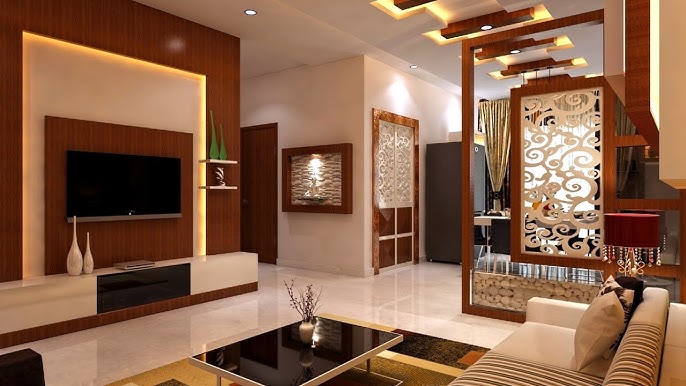Partner with an expert Architecture Firm to build your vision.
Partner with an expert Architecture Firm to build your vision.
Blog Article
Transform Your Home With Essential Principles of Inside Layout and Appearances
The art of transforming your home via the crucial concepts of indoor design and aesthetic appeal calls for a thoughtful approach that balances shade, balance, and spatial awareness. By comprehending the influence of shade concept and the value of structure and patterns, one can develop spaces that are not only visually appealing but likewise deeply individual. Achieving this balance entails greater than plain design; it encompasses a strategic setup and a keen understanding of just how each component engages within a space. As we discover these foundational principles, think about just how they may redefine your understanding of home and individual expression.
Understanding Color Concept
Understanding the principles of color theory enables designers to create spaces that reverberate mentally with occupants while meeting practical requirements. Each classification plays a critical function in developing harmony within a room.
The emotional impact of shades is extensive; cozy colors such as reds and oranges stimulate power and heat, while cool tones like blues and environment-friendlies promote calmness and serenity. The use of corresponding shades boosts visual interest, producing striking contrasts that can raise a room's charm.
Neutral shades, on the various other hand, work as a flexible background, permitting various other layout aspects to beam. It is important to think about variables such as lighting and the room's purpose when selecting a shade combination, as these can change the perception of colors throughout the day.
Inevitably, a well-considered color design can change an area, promoting a feeling of comfort and style that straightens with the citizens' choices. Proficiency of shade concept is, consequently, a crucial skill for any kind of indoor designer intending to produce harmonious and inviting atmospheres.
Achieving Balance in Style
How can designers attain a feeling of stability in their rooms? Accomplishing balance in design is fundamental to creating harmonious insides.
Asymmetrical balance, on the various other hand, counts on varying elements that still accomplish a cohesive look. This strategy permits more dynamic and casual arrangements, providing rate of interest while maintaining stability. By very carefully selecting varying sizes, colors, and structures, developers can create an aesthetically compelling area that really feels balanced yet energised.
Radial equilibrium stresses a main centerpiece with aspects radiating outside. This design is commonly seen in circular designs, where furniture and style produce a cohesive surround that draws the eye inward.
Inevitably, accomplishing balance requires thoughtful factor to consider of range, proportion, and the connections in between aspects. luxury interior design. By masterfully using these balance concepts, developers can change rooms right into environments that feel both aesthetically pleasing and functionally unified, boosting the overall experience for passengers
Significance of Spatial Awareness

A keen feeling of spatial understanding allows developers to determine centerpieces within a room, assisting the audience's focus to vital features while keeping a total sense of unity. It additionally aids in the tactical placement of lighting, which can considerably affect the perception of area and state of mind. Moreover, understanding spatial partnerships makes it possible for the developer to satisfy the particular needs of occupants, guaranteeing that each location offers its intended function without jeopardizing visual appeals.
Eventually, spatial awareness is vital for making the most of the potential of any interior space. By meticulously thinking about the interplay between dimensions, layout, and function, designers can develop environments that not just fulfill practical demands but likewise stimulate a feeling of convenience and charm, improving the general living experience.
Including Appearance and Patterns
Accepting a diverse variety of textures and patterns can significantly enhance the aesthetic and responsive appeal of an indoor space. The tactical use different materials-- such as timber, steel, fabric, and stone-- produces depth and interest, making an area feel a lot more welcoming and vibrant. As an example, incorporating smooth surface areas with rough textures can establish a balance that attracts the eye and engages the detects.
When integrating patterns, think about both range and rep. Huge sites patterns can function as prime focus, while smaller sized, refined styles can match other aspects without frustrating the space. Layering patterns, such as pairing flower pillows with striped throws, adds intricacy and a feeling of consistency if carried out attentively.
It is also vital to preserve a cohesive color combination, making certain that textures and patterns collaborate as opposed to compete for focus. By selecting a couple of vital structures and patterns, you can create a combined visual that mirrors your individual design while boosting the overall setting of the space. Inevitably, the careful consolidation of these elements can transform a mundane room into a sophisticated environment abundant with personality and heat.
Customizing Your Room
Producing a space that shows your character is important to achieving an absolutely inviting atmosphere. Customization in interior decoration allows you to instill your one-of-a-kind style and rate of interests right into your home, transforming it from a simple shelter into a shelter that talks to who you are. Begin by selecting a color palette that resonates with your feelings-- strong colors can invigorate, while soft tones provide peace.
Integrate artwork and design that mirror your passions, whether it be traveling, nature, or abstract concepts. Showing individual collections, such as publications, photos, or mementos, can stimulate valued memories and produce focal points within an area. In addition, consider personalizing practical items, like upholstered furnishings, to align with your visual preferences.

Final Thought
Finally, the change of a home with the vital principles of interior decoration and aesthetic appeal necessitates a thorough understanding of color theory, equilibrium, spatial awareness, appearance, and personalization. Each aspect contributes substantially to creating an unified and practical living atmosphere - miami interior design. By attentively integrating these concepts, individuals can boost the aesthetic allure and emotional vibration of their spaces, eventually promoting a home that mirrors special identifications while supplying convenience and usefulness
Report this page